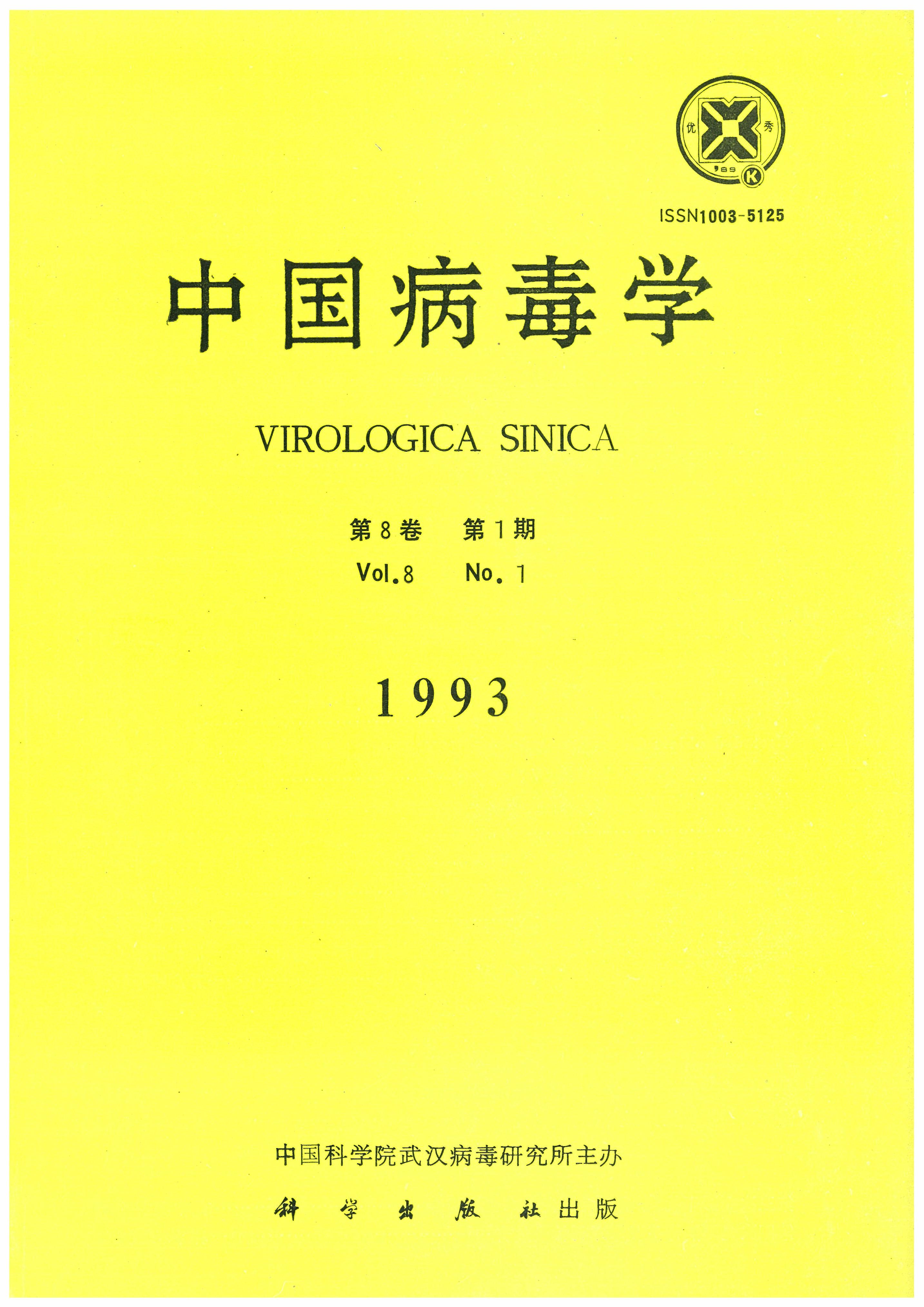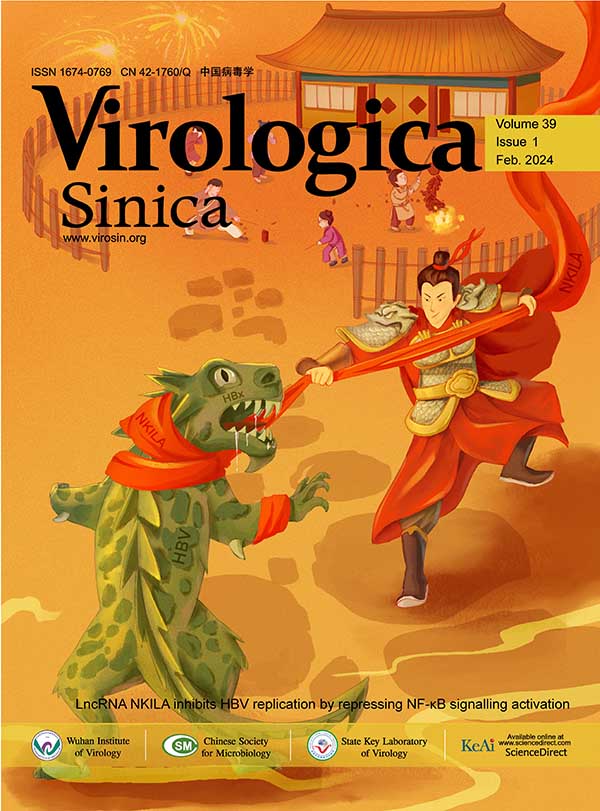107 fresh blood specimens and 22 blood specimens from the blood bank were detected by polymerase chain reaction (PCR) and ELISA. The positive percentage of detecting CMV DNA in the leukocytes of the blood specimens by PCR is 77.3—80.4%. Meanwhile the positive percentage of CMV-IgG in the plasma by ELISA is 65.9%. CMV-DNA was always persisted in the blood specimens that is seropositive. When CMV-DNA was negetive, some of them carried CMV-DNA. It is concluded that people should pay more attention to the serio...
In this study, three-week-old mice, 12—14g, were treated by cytoxan three times. They were then injected subcutaneousiy with SA_(14)-14-2 live vaccine, no mouse was killed by the attenuated virus. When the immune-inhibited mice were immunized with the attenuated live vaccine and the inactivated JE vaccine, they exhibited different immune responses to the both vaccines. Those immunized with the attenuated live virus showed better protective effect (protective rate 56—80%)against JE virulent virus challenging...
A diagnostic assay has been developed to detect human cytomegalovirus (HCMV)DNA in clinical specimens with biotin-labelled DNA probe, cloned fragment of HCMV strain ADl69.The biotin-labelled probe can detect 100 pg of homologous DNA and does not hybridize with DNA from other herpesvirus or human embryonic lung cells(HEL) and Hep-2 cells. 30 umbilical cord blood and 10 urine specimens from pregnant women were examined by hybridization assay with biotin-labelled probe. Among 30 umbilical cord blood specimens,...
The difficulties of rotavirus(RV) propagation in cell culture were not overcome completely, because not all groups of RV or not all strains of the same group of RV could replicate in vitro as yet. One of. the reasons of the difficulties might be that there ware only a few kinds of cells susceptible to RV. In order to screen a new cell line for RV propagation, three continuous cell lines (Frhk-4, Hep-2, HEL) were used as screened cell and six strains of RV(Wa, DS-1, Yo, St, Thomas-3, SA-11, UK)were used as m...
The nucleocapsids of varicella-zoster virus (VZV) strain J1 isolated hy Dr. Hun Shi-jie et al in Jinan in 1990 were studied with electron microscope. Three distinct species of nucleocapsids of VZV strain Jl designated as either A, B or C on the basis of their electron densities, were cheracterized. Type A, B and C nucleocapsids possess a densely stained core, particleshaped core and light or empty core respectively. The nucleocapsids are 75—100nm and cores are 35—55nm in diameter. All the three species were...
The cloning and characterization of a whole genome of human Papillomavirus type 16 (7.9kb) and a 5.4kb subgenomic fragment are presented here for the first time in China. Both of them were cloned in HB101 after insertion in plasmid pAt153, using it s unique BamH1 site. The full-length genome and subgenomic fragment are designated HPV16Z and HPV16F, respectively. After analysis of 16 endonucleases, none of new endonuclease site were found in HPV16Z comparing with standard strain. A new BamH1 site was observe...
Based on the systematic analysis of HFRSV strain 76/118 (Hantaan virus) M and S gene with personal computer, the endonucleased fragments of tha two gene cDNA were subcloned for smaller gene probes and expression studies afterwards. The fragment containing G2 gene and the HindⅢ -BamH Ⅰ 437bp fragment of S gene were cloned into pX62, the positive recombinants of the former were selectecd by inactivation of XylE gene, a chromogenic selective marker, while the latter did not inactivate XylE gene expression, in ...
The Epidemic B Encephalitis Viral Associated Antigen (JEV-AAg) in the peripheral blood leucoyte were detected with PAP method in the patients with acute Epidemic B Encephalitis during July to August 1991. Results: The total positive rate of JEV-AAg in leucocyte was 41.2%(21/51). The positive rate and the type of the disease were compared; 25% (2/8) in the mild type, 44.8% (13/29) in the ordinary type and 42.9% (6/14) in the severity type, there was on significant difference between the two types. The JEV -A...
In this paper we reported the detection of HCV-RNA in plasma of blood donors by nested double polymerase chain reaction method using two pairs of primers located in the 5 -terminal non-coding region. We found that nested double PCR method is much better than single PCR method both in sensitivity and specificity. And we also found that only 35.2% (19/54)of anti-HCV(C100-3)positive plasma samples can be confirmed to be also PCR positve. We concluded that because the false positve rate of anti-HCV ELISA is too...
The polymerase chain reaction (PCR) was applied to identify the human papillomavirus (HPV) 6 and 11 DNA in the spcimens from 30 patients with condyloma acuminatum. The positive percentage of HPV6, HPV11 DNA was 60%, 90%, respectively. 53.3% samples showed the presence of both HPV6 and HPV11 DNA. The total positive percentage was 96.7%. Our result supported the data presented previously that the HPV6 and HPV11 are strongly associated with condyloma acuminatum. The PCR proved to be a rapid, sensitive, highly ...
In this paper the morphological characteristics and biochemical properties of two strains of Attacus ricini nuclear polyhedrosis virus isolated from different sources were described. One strain of Attacus ricini was fed with leaves of Coriatia Sinica for many years (the vernacular name: Coriatia sinica silkworm), and virus was obtained from larvae and pupae. The other strain of Attacus ricini was fed with leaves and virus was obtained from larvae of Attacus ricini. Morphology of polyhedra was slightly diffe...
Sweet potato feathery mottle virus (SPEMV) was purified from infected I.Nil leaves using ultracentrifugation and CsCl step gradient centrifugations. Virus yields of 13—15 mg Per kilogram of infected Ieaf tissue were obtained. The normal particle lengths of the SPFMV was 820—860nm. The virus obtained was highly infectious and a good immunogen. Purified virus had a OD260/OD280 ratio of 1.21.
An isolate of virus was obtained from Capsicum annuum in Yangling of Shaanxi Province. Virus infected 8 plant species from families out of 17 plant species from 6 families tested. Virus Caused systematic lesion etch on Nicotiana tobacum white Burley and N. tobacum samsun, and mosaic and distorsion on Datura stramonium and Capsicum annuum, and local lesions on Chenopodium amaranticolor, Its thermal inactivation point was 50—55℃ dilution end point was 1000—3000, and longevity in vitro was 3—5 days, Myzus pers...
Using hybridoma techniques, six monoclonal antibodies (mAb), P3, 4A4 6B1, 7A6, 7D1 and 7D8 to Freesia chlorotic stripe mosaic virus ( FCSMV), were prepared. The titers of mAb were 1:10~2—1:10~6. MAb 7A6 and 7D1 were IgG1 subclass. 7D8 and 4A4 were IgG2a and lgG2b subclass, respectively, mAb P3 and 6B1 were of IgG3 subclass. The reactions of mAb to virus particles and denatural coat protein indicated that mAb P3, 4A4 and 6B1 were associated with different sequential epitopes of coat protein, and others were ...
Three ELISA and an SA-test methods were used to detect CMV and TMV in the crude extracts of diseased plant. For the sensitivity, Dot-ELISA method is the best with maximum dilution point of 1.282.5610~(-3), followed by DSM-ELISA and SPA-ELISA (6.410~(-2)), SA-test is lower(0.8 10~(-2)). For the nonspecific reaction, SPA-ELISA is lower than DSM-ELISA. When the antisera are absorbed by the extracts from the health plants, it was avoided to a great extent in Dot-ELISA and SA-test.
According to length estimation of virus particles and the results of F (ab′)_2-ELISA and ISEM tests, barley mild mosaic virus(BaMMV) was recognized with complex infection of barley yellow mosaic virus (BaYMV) in barley cultivar "Yanfuaizhuo 3" grown in soil from viruses contaminated field at Rudong Institute of Agriculture, Jiangsu, This was the first report of the occurrence of BaMMV in China.
The Hep-G_2 cell lines were inoculated for isolating HEV and two strain CPE Viruses (R19, R25)were isolated from experimental infected monkey s acute phase fecal. IEM revealed that the isolated two strain viruses could be aggregated by acute phase sera of ET-NANBH patients from Xinjiang and USSR respectively and there were obvious antibodies and full, spheric 1 27-34nm virus-like empty particles (VLPS). The two strain viruses could be neutralized by acute phase sera of HE patients. The sera of patients from...
Polymerase Chain Reaction (PCR) combined with Heat-inactivation is adopted to detect of rabies virus. Using a pair of primers specific for rabies virus, reverse transcription and PCR were performed. The amplified products were visualized after electrophoresis on 2% agarose gel, stained with ethidium bromide and exposed to ultroviolet light. It is shown that:(1) A DNA fragment corresponding in size to the distance between the two primers (329 bp) could be amplified from the nucleic acid extracted from the ra...

















